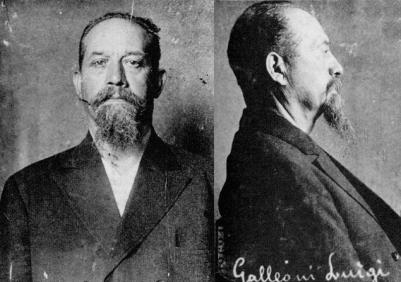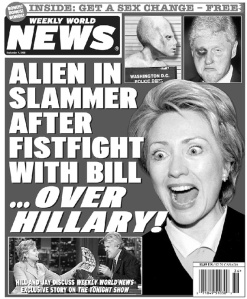Historical films and TV shows are now all the rage. On the big screen, Dunkirk, Darkest Hour, The Post, Victoria & Abdul, American Made, and a host of other films set in distinct historical periods have caught audiences’ attention. Folks staying at home who content themselves with the tube have been treated to shows like Vikings, The Crown, Victoria, Poldark, Peaky Blinders, and Medici.
But now Simon Jenkins at The Guardian comes to ruin the party by resurrecting an old lament: Hollywood history is fake.
Indeed, Jenkins condemns this history in the strongest terms—the title of his piece more or less claims that movies treating historical topics are just as phony as “Russian propaganda.” Jenkins points out several examples of events in such films and TV that were manufactured (e.g. Darkest Hour has Churchill taking the Tube in London and asking commuters whether they wanted to make peace with Germany—which, of course, never happened).
Jenkins sees this cavalier attitude toward the truth as a symptom of a contemporary world that has lost its bearings, where journalism “is now made up of unattributed quotes” and the line between fact and fiction has been blurred by tolerance of fake news.
This blog has read The Guardian for a long time and understands that it has several axes to grind. The Guardian generally dislikes American culture and especially Hollywood. Its attitude toward Americans could be summed up generally by Fanny Trollope’s famous condemnation in Domestic Manners of the Americans (1832): “I do not like them. I do not like their principles; I do not like their manners, I do not like their opinions.” Moreover, The Guardian’s politics has made it wary of films like Dunkirk (which to some seems whitewashed and pro-Brexit) and Darkest Hour (the contemporary left in Britain very much dislikes Churchill). Still, Jenkins may be half right.
One Thing after Another has complained in the past about historical inaccuracies in films, especially among those whose explicit purpose seems to be didactic in some way. The thing is, though, there is nothing new about such films. They are not a product of a contemporary truthless age. Hollywood has always produced such movies. Take, for example, The Story of Louis Pasteur, which won Best Story, Best Screenplay, and Best Actor (Paul Muni) at the Academy Awards in 1936. It was terribly inaccurate. But that did not set it apart from all the other major biopics headlined by major stars during that period. Think of Queen Christina (1933), The Private Life of Henry VIII (1933), Annie Oakley (1935), Rembrandt (1936), Mary of Scotland (1936), The Life of Emile Zola (1937), Marie Antoinette (1938), Young Mr. Lincoln (1939), The Private Lives of Elizabeth and Essex (1939), and The Story of Alexander Graham Bell (1939). We could also refer to films set in particular historical periods (e.g. The Scarlet Pimpernel, which was released in 1934, or Gone with the Wind, which appeared in 1939). These films are rotten history, but there were important differences between that time and ours. These differences emerges in the Frank Nuget review of The Louis Pasteur Story which appeared in The New York Times and is worth quoting at length:
There are times when even a film reviewer feels the need of a preamble and today is one of them. With your permission, then, before speaking of “The Story of Louis Pasteur,” which moved into the Strand over the week-end, the department will confess that it is guilty of heresy. It believes that accuracy is not the most important part of biography. It will accept errors of time and place cheerfully, and it will condone the addition of known fiction to known fact provided these untruths are committed in the interests of a greater truth, which would be the preservation of spirit—not the chronological letter—of a man’s life.
“The Story of Louis Pasteur” telescopes the French scientist’s years and highlights his achievements. It embroils him in a prolonged feud with the French Academy of Sciences and its president. It has him incur Napoleon III’s displeasure and virtual banishment from Paris. It delays his recognition until the evening of his life. It portrays him as a model of scientific detachment, the laboratory method personified, a modest, academic, self-effacing man.
Most, if not all, of this is against the weight of such biographical evidence as one might encounter in staid Britannica or in the more lively pages of Paul De Kruif. And yet, possibly because we have heretical notions, we believe that Warners’ “The Story of Louis Pasteur” is an excellent biography, just as it is a notable photoplay, dignified in subject, dramatic in treatment and brilliantly played by Paul Muni, Fritz Leiber, Josephine Hutchinson and many other members of the cast.
There are two important points worth highlighting about this review. First, Nugent conceived of films and even biopics as art. He recognized that The Story of Louis Pasteur, like most other forms of art, fudged facts or “reality” to present larger more important truths. Second, Nugent was educated enough to know that The Story of Louis Pasteur was factually inaccurate. In other words, he had the capacity to distinguish between art and history, and he performed the service of letting his readers know what the distinction was. If there are differences between Nugent’s time and ours, they amount to the following. First, nowadays, many people possess so little understanding of history and art that they cannot grasp that “historical” films are more art than history. Second, contemporary reviewers, whose task consists of educating the public, have conspicuously failed to delineate the distinction between art and history—largely because they know nothing about the past.
The preceding seems to suggest that what is wanted among audiences and critics today is a broad, liberal education that would allow both to navigate the world of culture somewhat better. In this context, it should be pointed out that Nugent, who reviewed films for The New York Times for years, eventually moved to Hollywood and, among other things, worked with the famous director John Ford. In this capacity, Nugent wrote the screenplay for The Searchers, widely considered one of the finest Westerns ever made. We cannot claim that Nugent was the product of a liberal arts education (he attended Columbia University where he studied journalism), but judging from The Searchers, he was, for the times, a man of wide, human sympathies who understood much about people and things. If we cannot obtain our film critics from liberal arts colleges, maybe these sympathies and understandings, which we associate with a liberal education, are a good place to start.
Furthermore, I consider that the myth of the unemployable History major must be destroyed.






